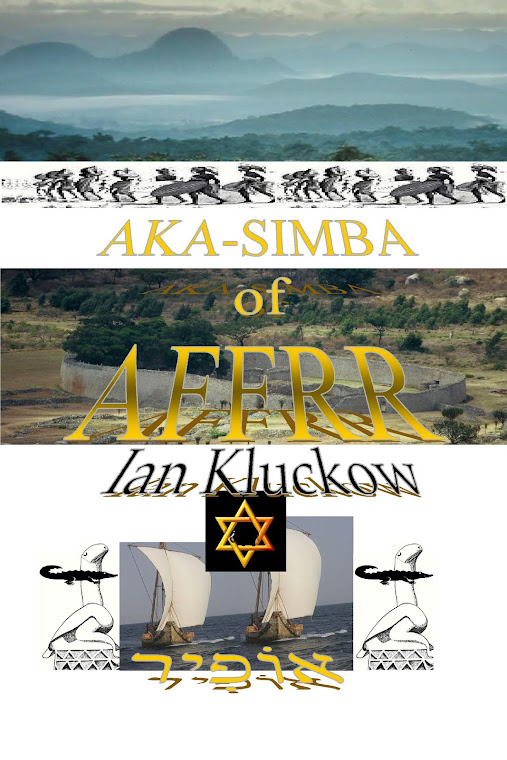With a super lake where the Kalahari is, the climate in those times would have been very different from what it is now and its effect on population distribution would have been profound.
In 1886 Farini, an American wandered the Kalahari searching for diamonds. In his book, Through the Kalahari Desert, he wrote of a lost city. Describing ‘a long line of stones looking like the Chinese Wall after an earthquake’ he traced it for nearly a mile. There were ‘loose pieces of fluted masonry' and 'rude sculptured blocks' among the huge, flat-sided stones.” His book contained two maps. He gave a speech and presented a map to the Royal Geographical Society in which he claimed he had 'traced what had evidently once been a huge walled enclosure, elliptical in form and about one eighth of a mile in length'. He placed the structures at 23° 30' lat. and 21° 30'.
In 1950 shortly after a Dr. F. D. van Zyl had departed on an expedition of rediscovery, the Johannesburg Sunday Times dated 15 July 1950, wrote of an interview with a Mr. D. J. Herholdt, living at Vanderbijl Park who claimed that together with his brother-in-law he had found the lost city in the Kalahari in 1925. Describing the lost city, he claimed it was an expanded 'Zimbabwe' type structure with four 20 ft. 'observation posts' of ironstone blocks, strange hieroglyphs, terraces leading to an amphitheatre. Two huge tombs had been cut into solid rock and there were rack on rack of embalmed mummies.
In 1959 Mr. J.N. Haldeman carried out an aerial search in a small area at very low level searching for that Lost City of the Kalahari in the general area (erroneously) marked on Farini’s inaccurate old map - 23° 30’ lat. 21° 30’ long. In a lengthy and detailed report this is what he had to say in summary:[1]
We flew 8,400 miles altogether in our aerial search, most of it at 200 ft. and 300 ft., and sometimes down between the peaks of the sand-dunes. There are possibly a hundred prominent sand-dunes (mountains) in the area. We have even seen ostrich eggs on the ground-but on the other hand we had to make three passes before all three of us in the plane could spot a ten-foot animal hole in the side of a sand-dune. Some who have flown a small fraction of the time and distance we did are positive that the ruins cannot exist because they did not see them. We feel that we could quite possibly have missed them in the camouflaged desert terrain, even if they were still visible. But there is the possibility that the ruins are completely covered. As the sand-dunes are not so big, there should still be some evidence of a wall that Farini could follow for a mile or even one-eighth of a mile. His story and his description of the country ring true. Perhaps someone will have to dig, but some day the Lost City of the Kalahari will be found.
What is the relevance of the superlake and the Rivers of Eden to the highly charged, much politicised, racially tinged subject – The History of the Great Zimbabwe Mystery?
[1] Lost City of the Kalahari Author(s): J. N. Haldeman Source: The South African Archaeological Bulletin, Vol. 13, No. 49, (Mar., 1958), pp. 39-40 Published by: South African Archaeological Society


No comments:
Post a Comment